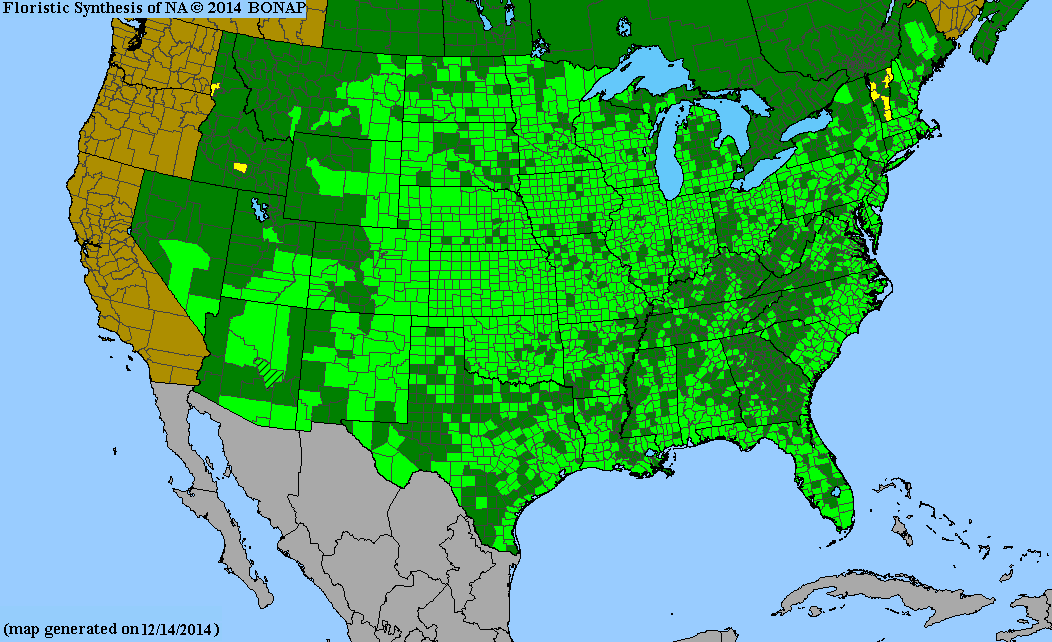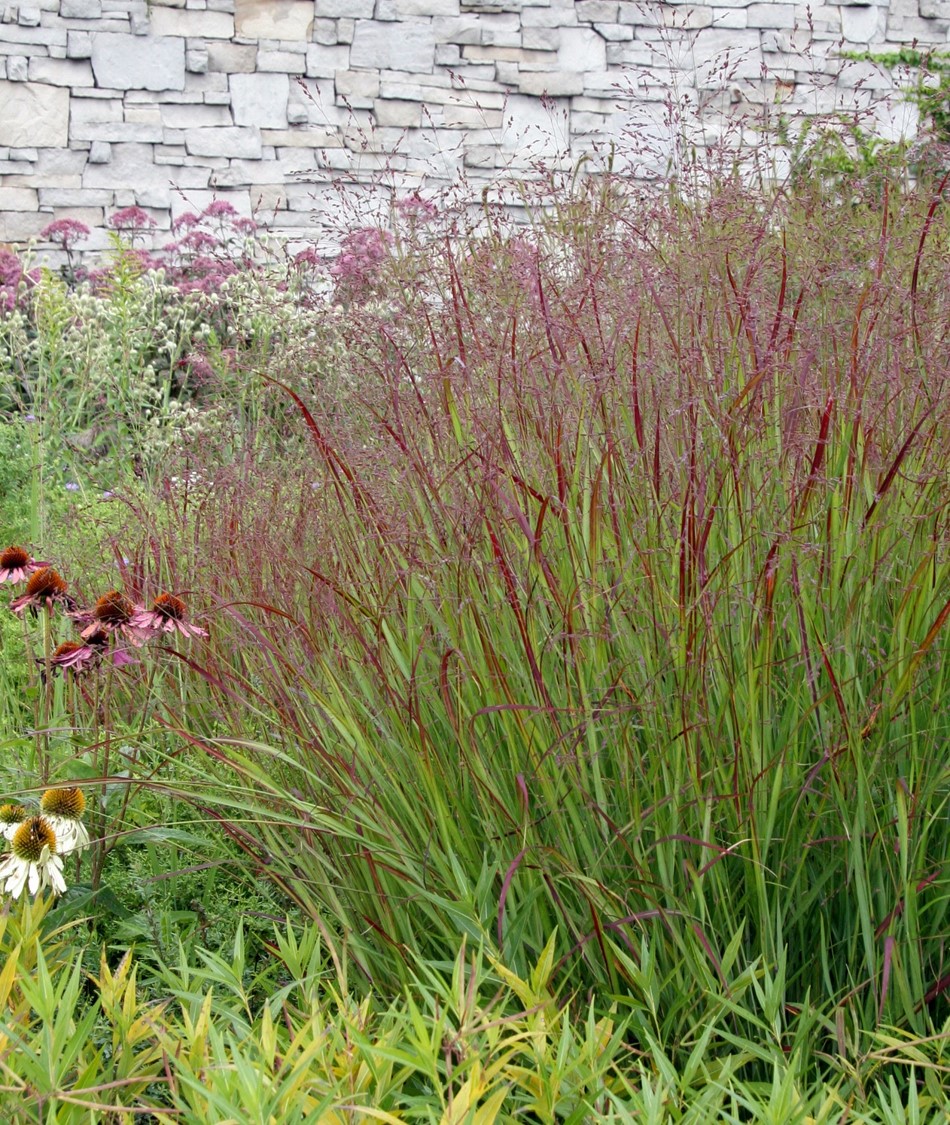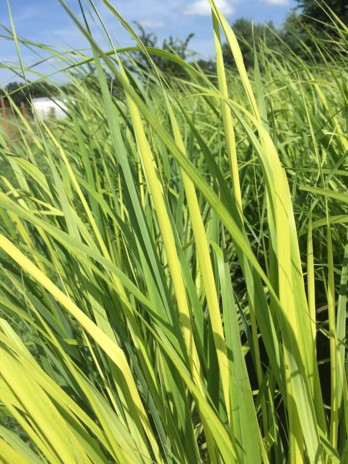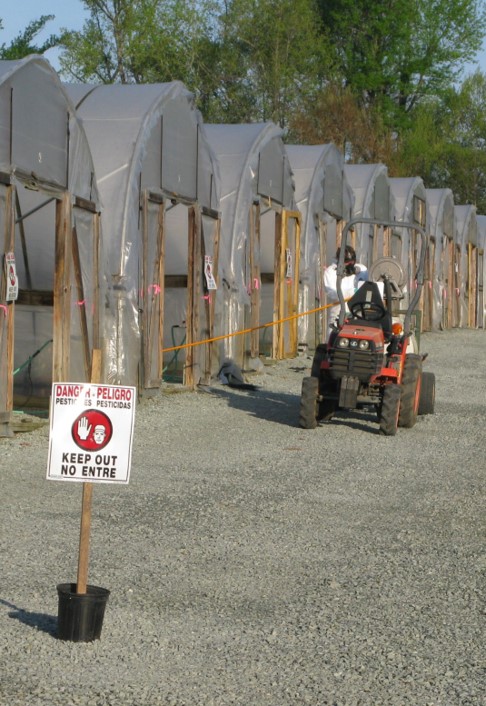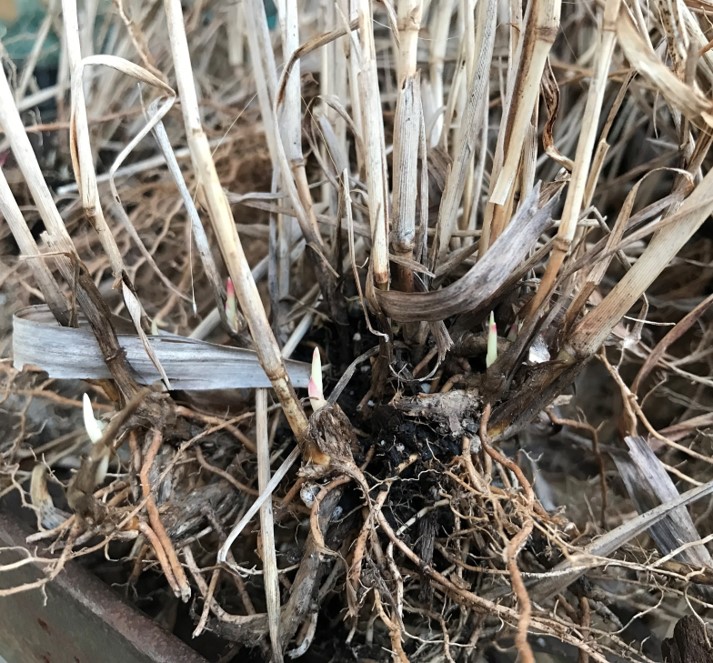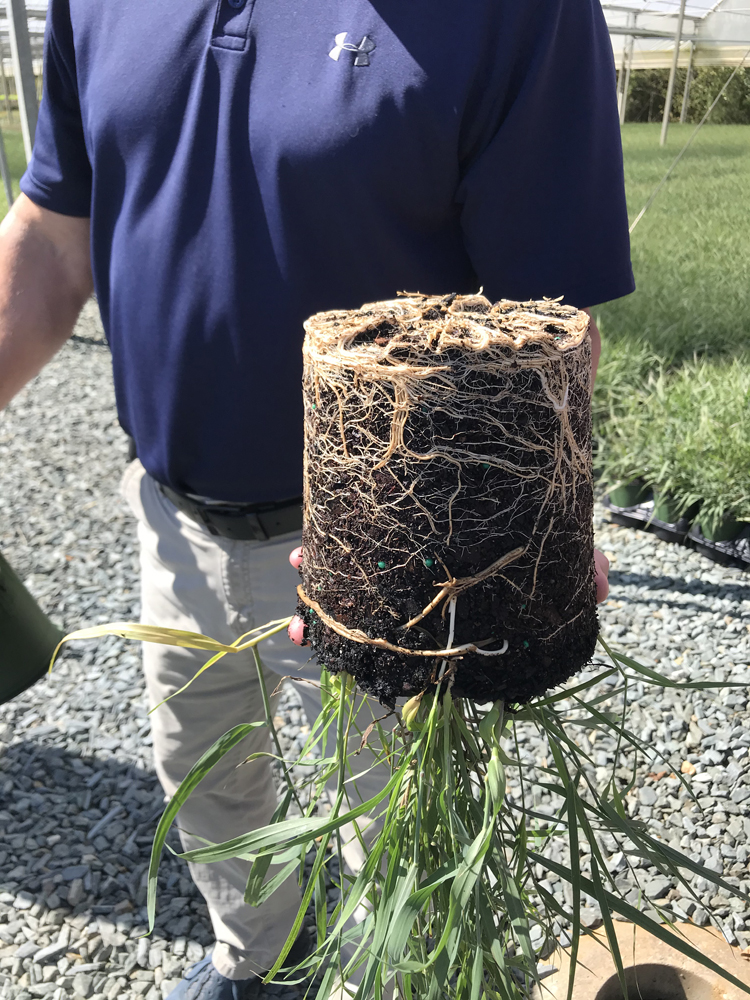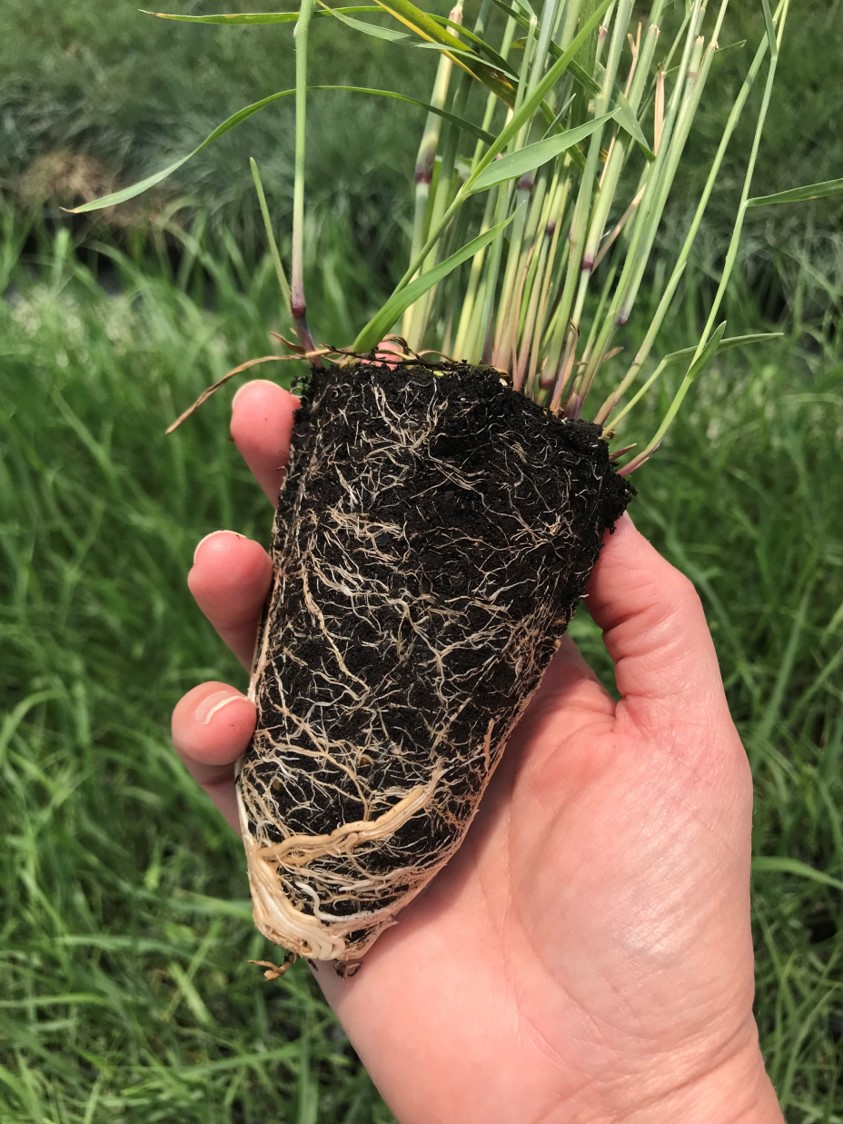Panicum virgatum and its cultivars are popular, long-time favorites. They combine beauty, toughness, and adaptability with a winning combination of ecological value. Most of our nursery and greenhouse customers are growing several varieties, and they know they can come to us for assistance. The most common production concerns we hear about are yellowing, rust, and slow emergence in spring. Getting a handle on Switchgrass is important for any grass program, so we wanted to share our experience.
We focus first on understanding the range and warm-season nature of Switchgrass. Then we address cultural conditions and management practices, which are often related to yellowing and rust problems. As warm-season grasses, Switchgrasses are some of the last to emerge in spring, so we'll cover production scheduling and finish timing to help you take advantage of the Panicum growth cycle.

